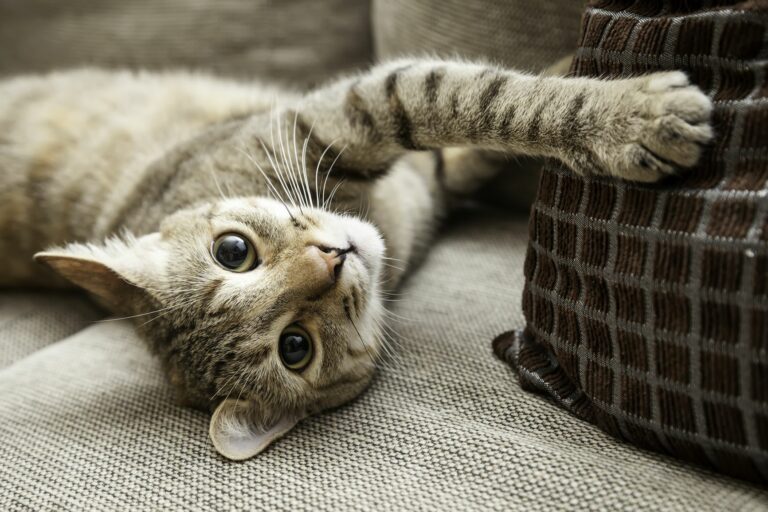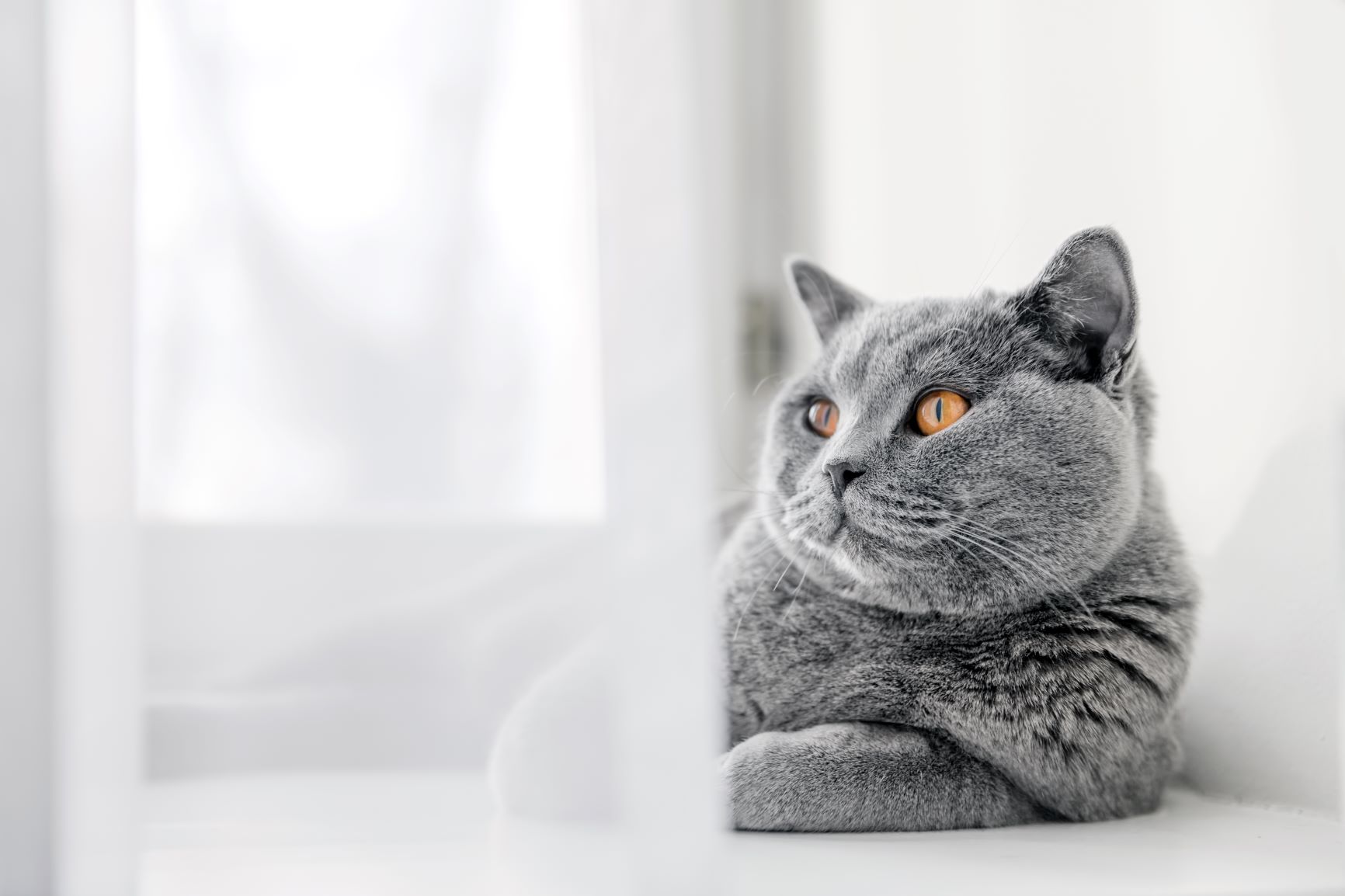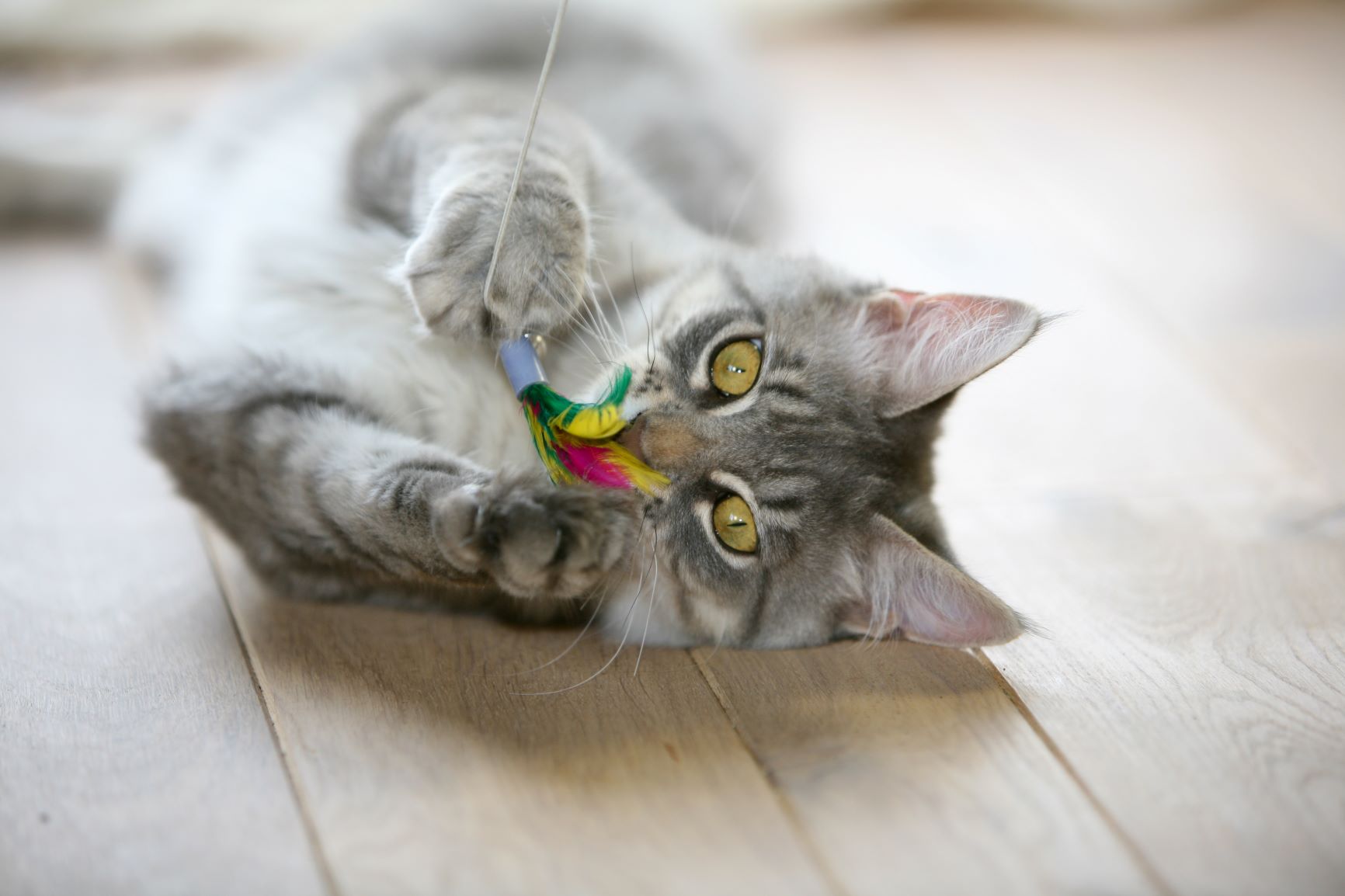Indoor cats: What you should focus on
It isn't always possible to let cats outside – for example, because your living situation doesn't allow it. You should focus on a few points so that your indoor cat feels happy with you.
It isn't always possible to let cats outside – for example, because your living situation doesn't allow it. You should focus on a few points so that your indoor cat feels happy with you.

© martin.es / stock.adobe.com
Even indoor cats can lead a happy life.
Roaming freely is generally considered the more species-appropriate form of housing for cats. However, outdoor access is not right for every cat and the environment isn’t always suitable for this.
Nevertheless, you don’t have to do without a four-legged housemate if you live in a high-rise building or a street with plenty of traffic. With a few tips and tricks, you can ensure the happiness of your indoor cat.
Cats are often not very popular with landlords. Before you get one or even several cats, you should read through your rent contract in detail.
Although keeping cats in rented housing is often not prohibited, the contract may stipulate otherwise. If in doubt, take legal advice from a lawyer.
Outdoor cats can come across fellow felines in the neighbourhood at any time. Such contact isn’t always harmonious and can sometimes result in bitter fights over territory. Nevertheless, they are part of a natural feline life. Indoor cats don’t have this possibility.
Hence, many people wish to give two or more cats a home – especially if they don’t work at home and the cat would be alone all day.
The basic requirement for keeping several cats is that they have to get on well with each other. It’s best for cats of the same age and gender to live together. Siblings usually also get on well throughout their lives.
The average living space for one cat should be 18 sq feet as an absolute minimum. Still, the more space you can offer your cat, the better.
Despite this, you don’t need an enormous palace to own a cat. The size of your home isn’t the primary deciding factor, but a feline-friendly set-up and the number of rooms.
As a rule of thumb, the maximum number of cats living with you should be the same as the number of rooms. Pet cats definitely need the opportunity to get out of the way once in a while in order to feel at ease.
Is your cat anxious or does it have a significant need to withdraw? Then there should be at most as many cats, humans and dogs in a home as there are available rooms. For instance, if there are two of you living in a three-room apartment, there is only space for one anxious cat.
Indoor cats generally don’t have any contact with unfamiliar cats, therefore the risk of them catching an infectious disease is significantly lower. Nevertheless, indoor cats should also be vaccinated against panleukopenia and cat flu, because these diseases can be transmitted by other means.
Important: Get indoor cats microchipped! Even indoor cats can disappear outside in a glib moment and get lost. Definitely get your cat microchipped and registered with a reliable organisation.
Some cats, especially those of a timid nature, don’t want to go outside at all and prefer the security of a cosy home. Very old or handicapped cats are also best off staying indoors. If your cat suffers from an infectious disease such as feline AIDS (FIV), it should not be given outdoor access.
A cat that has never been outside probably won’t miss outdoor access whatsoever. They can live a happy life even without daily exercise. This is different with former strays or farm cats: they need their freedom and feel trapped if they are no longer allowed out.
 © Photocreo Bednarek / stock.adobe.com
© Photocreo Bednarek / stock.adobe.com
Whether a cat will be happy as an indoor cat depends not least on its character and individual preferences. However, some cats are particularly well suited to it.
Above all, calm souls such as British Shorthair cats can lead a satisfied life purely as indoor cats. Persian cats also have little yearning for freedom.
Hairless Sphynx cats should also stay indoors. As hairless cats, they are very sensitive to the cold, minor injuries and UV light.
At 20cm shoulder height, the Singapura is the world’s smallest cat breed, making it an indoor breed. It would be difficult for these mini cats to stand up to larger cats in the neighbourhood. However, these bundles of energy need plenty of activity.
A home is very small compared to the territory of an outdoor cat, so it is all the more important for the set-up to accommodate your cat’s needs.
Cats love observing their surroundings from an elevated position. High scratching trees and wall boards make ideal perches. Don’t relegate the scratching tree to a separate cat room. Cats are happiest in the thick of the action and the living room is the best place for a scratching tree.
Cats also need a scratching tree to sharpen their claws. Otherwise, you are at risk of your cat using upholstered furniture to keep its claws in check.
Suitable withdrawal opportunities are equally important. Cuddly dens or a scratching barrel offer perfect hiding places. To vary things up, leave your cat a worn-out cardboard box in which it can hide.
Litter boxes are also part of the furniture. They should be in a quiet spot accessible from two sides. Cats need an escape route from their little quiet spot just in case. In principle, you should always set up one litter box more than there are cats living in the household.
Before your furry friend enters your home, you should make it cat-proof. Do you have plants that are toxic for cats? Are your bottom-hung windows secure? Are medication and foods that are toxic for your cat in a secure place?
Get used to keeping the toilet lid closed at all times and to always checking the washing machine and tumble drier before switching them on.
Your home should have a balcony so that your cat can grab some fresh air now and then. Unfortunately even cats can fall from balconies and suffer serious injuries. Don’t count on your cat’s nine lives, but be sure to install a cat net. There are also options for which no holes need to be drilled into the brickwork.
Your indoor cat will be happy if you play with it regularly.
 © Simone van den Berg / stock.adobe.com
© Simone van den Berg / stock.adobe.com
Cats have an innate hunting instinct. At most, a fly gets lost in your home and can be caught by your cat. Hence, you must provide activity:
It’s best to offer an extensive play session every day. Throw cat balls through your home and let your cat run after them. Get a cat dangler pole with feathers and imitate a bird. Plush mice are a suitable replacement for real prey.
When you don’t have much time, your cat can occupy itself with an intelligence toy. These have small hollows and indentations from which your cat has to fish out snacks or dried food nuggets with its paws.
You can find a large range of cat toys in the zooplus online store.
Although free-range is considered the more natural way of keeping a cat, there are definite advantages to not allowing your feline friend outside:
Indoor housing is thus much safer, but safety comes at a cost. Here are the advantages of solely keeping cats indoors:
Read in our article Indoor or outdoor cat? which housing option is best suited to your cat and your living situation.
The bottom line is that indoor cats can lead a very happy life. It’s important that cats are used to be kept indoors and don’t miss outdoor access. In addition, you can provide a cat-friendly set-up and sufficient activity for your feline friend.
It isn't always possible to let cats outside – for example, because your living situation doesn't allow it. You should focus on a few points so that your indoor cat feels happy with you.